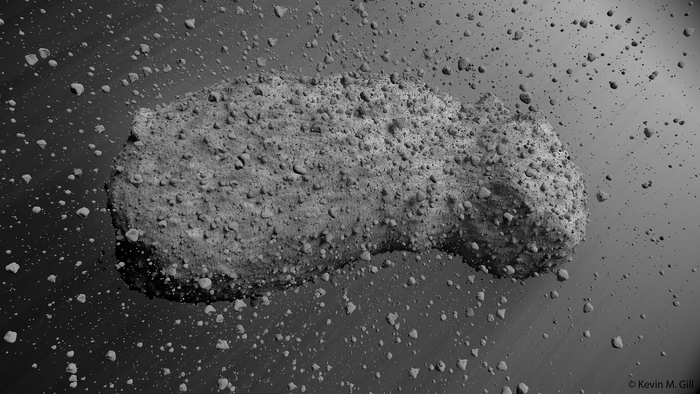Space is filled with many elements, materials, dust, rock, planets, and more, which means that the Earth is exposed to many hazards that may or may not be tracked, one that could potentially destroy the world. One study analyzed dust samples from an asteroid, which Japan's Hayabusa capsule collected, and it gave significant findings on how to defend ourselves from a future devastating event.
Saving the Earth from Asteroids: Itokawa's Study

(Photo : Curtin University via EurekAlert)
A new study from Curtin University in Australia entitled "Rubble pile asteroids are forever," published via the Proceedings of the National Academy of Sciences journal, talked about their findings on the Itokawa asteroid.
It is a rubble pile asteroid that was scooped by the Hayabusa in 2005, and dust particle samples were investigated by Curtin researchers to learn more about these space rocks.
According to the team's statement and study, said that two methods were used in the study, namely Electron Backscattered Diffraction (EBSD), which can measure if a rock has been shocked by any meteor impact, and argon-argon dating to date asteroid impacts.
As per the study, most of what will hit the planet will be rubble pile asteroids or a collection of space boulders and rocks from a larger entity held together by its collective gravity.
Rubble pile asteroids, despite being a collection of space rocks, can survive for over 4 billion years and has the potential to destroy the planet because of their size. It is also resistant to a massive external force.
Read Also: NASA will Bounce Signal Off a Massive Asteroid with Over 9.6 million Radio Waves
Dust Particles Bring Information on Asteroids
The researchers claim that the best hope to combat these is via redirecting its course, to avoid hitting the planet.
"The good news is that we can also use this information to our advantage - if an asteroid is detected too late for a kinetic push, we can then potentially use a more aggressive approach like using the shockwave of a close-by nuclear blast to push a rubble-pile asteroid off course without destroying it."
Asteroids and NASA's DART
There are specific spacecraft focusing on monitoring asteroids, particularly those that are potentially hazardous or would bring a devastating effect to the planet in its passing. While most of the asteroid flybys are far, it is still needed to know if a space rock hurling towards the planet would not change course at the last minute, especially with NASA's NEO Surveyor.
On the other hand, companies like NASA, ESA, and other space agencies do not want to take the chance on hoping these asteroids would stay in place and avoid hitting the Earth. This is why projects like the Double-Asteroid Redirection Test or DART missions were tested by the agency to blast it off its collision course toward the planet.
Earth is the only planet applicable for humans to live on, and protecting it at all costs is the top priority of astronomers, environmentalists, and experts in the field. Apart from internal threats that endanger the planet, researchers also focus on external ones, in the form of asteroids, as it could only take a small one to destroy a significant part of it.
The recent study aims to help determine the best course of action for the next asteroid hazard, to help humans in their survival and future.
Related Article: NASA DART Collision Aftermath: 2 Million Pounds of Debris Boosts Momentum Exchange!









